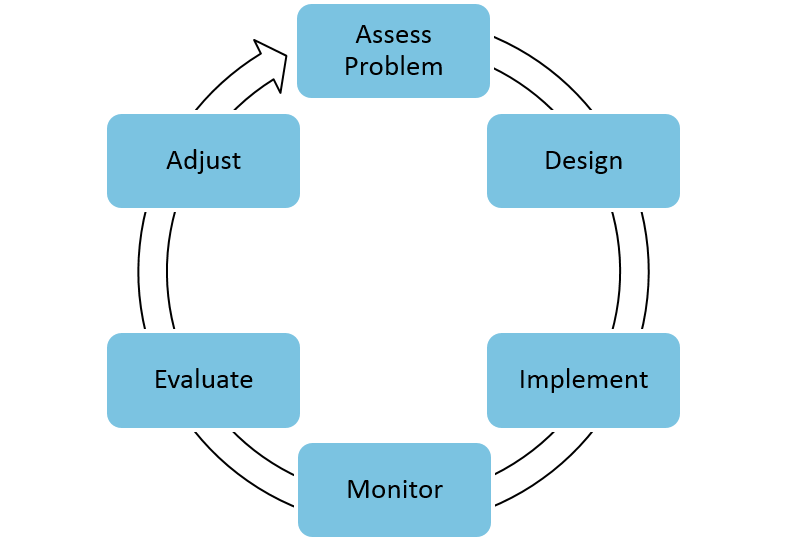
October 11, 2017 | PAMF program staff
The Phragmites Adaptive Management Framework (PAMF) is a new strategy for managing Phragmites in the Great Lakes basin that was initiated by the Great Lakes Phragmites Collaborative (GLPC) and funded by the Great Lakes Restoration Initiative. PAMF is using a systematic adaptive management approach that unites management with science to learn how to manage non-native Phragmites most effectively.
The purpose of any adaptive management program like this is to create a real-world experiment that can learn from management or other actions already going on. While this approach can have a significant number of benefits, it can be notoriously difficult to set-up. Therefore, a large initial investment of time and other resources is required before any learning can occur.
For PAMF, the set-up phase began in early 2016 and the program will be ready for wide-spread participation in spring 2018. The set-up process involved a 12-member team of experts representing state and federal agencies, academia, non-profits, and private landowners. This team worked together to develop a suite of tools and a broader framework that can be easily used by any land manager. When the set-up process takes a long time, some may think “Why do we bother with an adaptive management approach anyway?” Well, the long-term benefits are well-worth the upfront effort, especially for the issue of non-native Phragmites! Here are a few reasons why:
- PAMF enhances the impact of ongoing management
“No action” against invasive Phragmites is not an option. Mandated or not, land managers continue to invest significant resources into Phragmites management year after year, all around the basin. With so many ongoing management efforts, there is a tremendous opportunity for collaborative learning to occur. PAMF enhances the impact of individual efforts by combining data from each management action and the site of that action in a way that accelerates our collective learning about what site-specific best management practices are.
- PAMF can make it easier to make decisions
PAMF can collect the details (e.g., concentration of herbicide, method of application) from each treatment and then analyze the site-specific outcomes to find out how those details influence treatment effectiveness. This might be the only way that we can document the details of our management actions in a standardized way, share those details with others through a ready-made framework, and then receive advice that is science-based and helpful for future management decisions.
- Your knowledge and experience can help everyone learn
Phragmites has invaded a significant portion of the Great Lakes basin and really is a continental-scale problem. Therefore, even a small improvement in how we manage Phragmites at the site scale will translate into large benefits on a regional scale. Each manager applies their knowledge when making management decisions, so we need the PAMF to capitalize on those resources to provide benefit to everyone. How else might a manager in a U.S. state on Lake Superior learn from actions taken by Canadian managers in Ontario? Collectively learning while we manage is the best option if we hope to get ahead of this invasion.
Ultimately, an initial investment of time and effort will translate into informed, science-based decision making for anyone managing Phragmites in the basin. The pay-off could be huge, but the approach requires patience, flexibility, and ongoing support from stakeholders. Adaptive management is a long-term journey that might take us to places we could not imagine.
Are you excited?
Interested participants are encouraged to join our Listserv so we can contact you when the program is ready in spring 2018. Please direct questions and comments to Karen Alexander.
